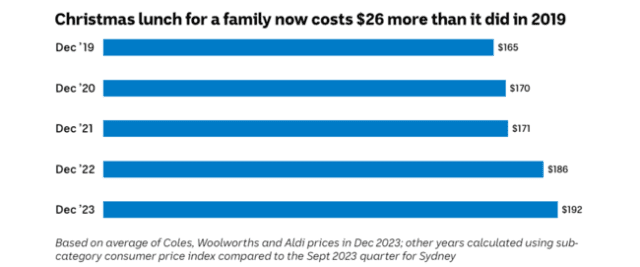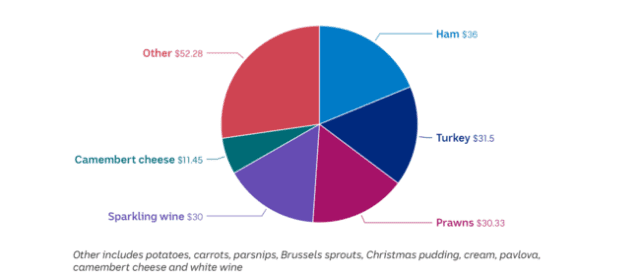
The escalating cost of living crisis in Australia has not spared the traditional Christmas lunch, with a recent study revealing significant spikes in the prices of festive ingredients. As a result of soaring food prices contributing to an overall increase in the consumer price index (CPI), Australians now find themselves paying 16 percent more for goods and services than they were in December 2019, just before the onset of the COVID-19 pandemic. The latest victim of this financial squeeze is the cherished Christmas feast, typically the occasion for lavish spending on quality foods. According to the study’s calculations, a traditional family Christmas lunch featuring turkey with all the trimmings and ham would set Australians back $192, which is $27 more than pre-pandemic prices and $21 higher than the cost in Christmas 2021.

The study further delves into the breakdown of costs, revealing a 16 percent increase in the price of traditional Christmas fare since December 2019 based on the Sydney CPI for each sub-category. With Australian households already allocating 17 percent of their budgets to food—the second-highest expenditure category after housing—this upward trend in Christmas lunch costs adds to the financial strain on families. Notable increases in the price of cheese (up by 15 percent) and bread (up by 12 percent) are cited, with the rising cost of dairy products attributed to increased farmgate milk prices, according to the Australian Bureau of Statistics (ABS). Despite the concerning overall trend, the study suggests a slight slowdown in the rate of increase this year, offering a glimmer of relief for consumers facing budget constraints.

The festive menu detailed in the study includes 1 kilogram of prawns, a 3.8kg turkey, a 4.5kg smoked half leg of ham, along with potatoes, carrots, parsnips, Brussels sprouts, Christmas pudding, pavlova with cream, and bottles of white and sparkling wine. This assortment, designed to feed about eight people with leftovers, is based on average prices from popular grocery stores like Coles, Aldi, or Woolworths. Despite the challenges presented by rising costs, the study emphasizes that the December quarter CPI data, to be released next year, may bring some relief based on positive trends observed in the monthly inflation data for October 2023.


